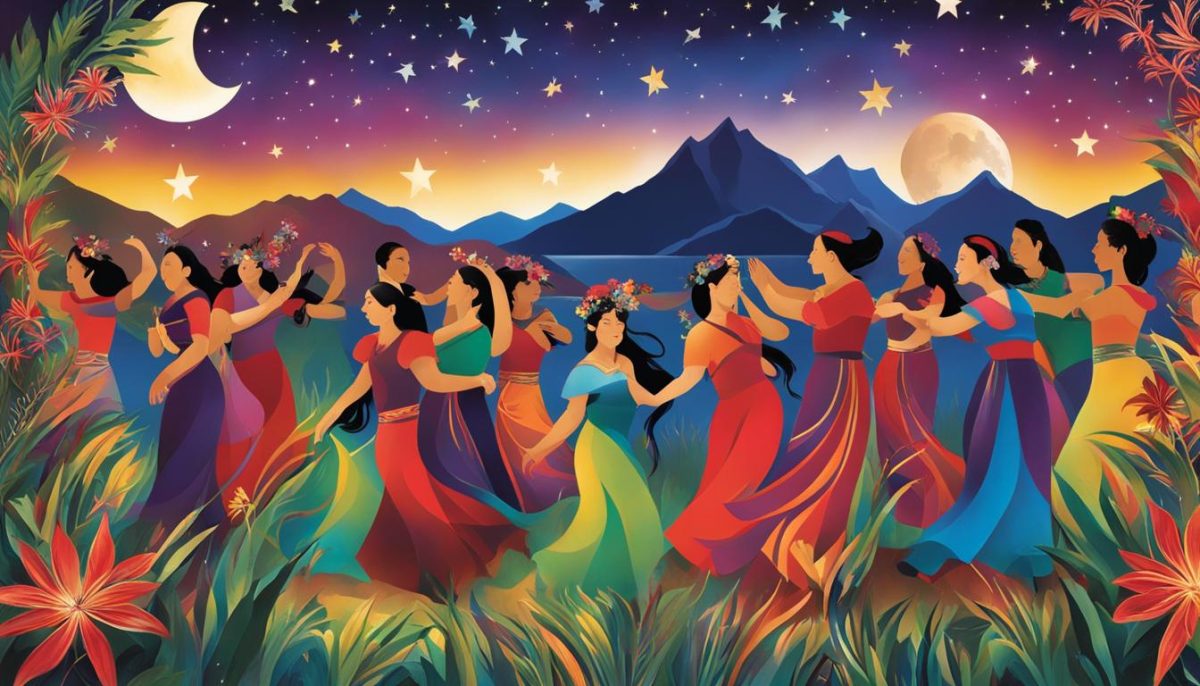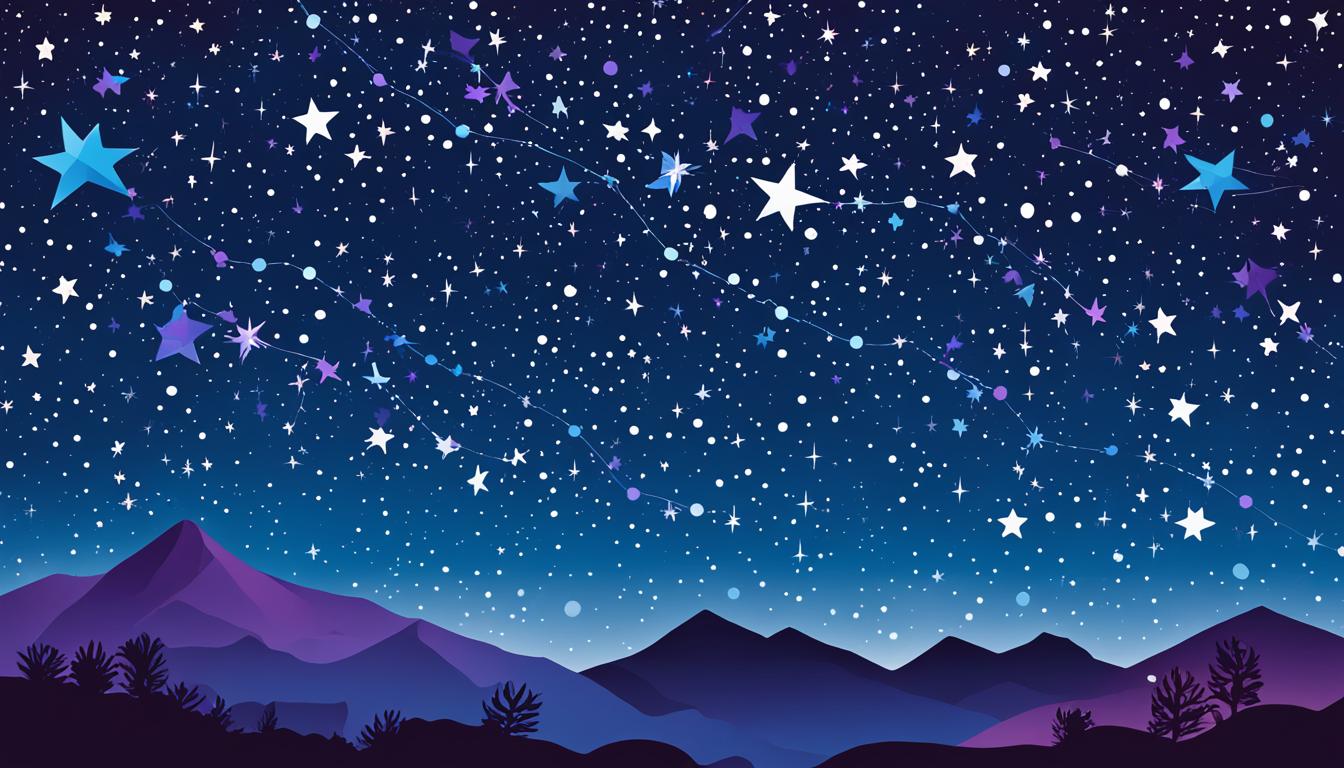Welcome to our article series on Matariki, the Māori New Year, and its significance as a public holiday in New Zealand. Matariki is a time of celebration and reflection, honoring the traditional Māori culture and fostering a sense of community among New Zealanders.
During this special day, New Zealanders come together to acknowledge the beginning of the Māori New Year and pay homage to the land, sky, and ancestors. It is a time when the Māori people embrace their cultural heritage, share stories, and strengthen family and community bonds.
Throughout this article series, we will explore the rich traditions associated with Matariki, the events and festivities held during this public holiday, the celestial significance of the Matariki stars, and efforts to preserve and honor this important cultural observance. So, buckle up and join us as we dive into the captivating world of Matariki!
Celebrating the Māori New Year
In this section, we dive into the rich meaning and vibrant customs surrounding the Māori New Year, known as Matariki. Matariki is an ancient Māori tradition rooted in the celestial phenomenon of a star cluster, also referred to as Matariki, that signals the beginning of the New Year in the Māori calendar.
Matariki holds deep cultural and spiritual significance. It is a time of reflection, renewal, and connection with both ancestors and the natural world. During this auspicious period, Māori communities come together to honor their heritage through a variety of traditions.
Cultural Rituals and Customs
At the heart of Matariki celebrations are cultural rituals that pay homage to the past and welcome the future. Families gather to participate in sacred ceremonies, signaling the start of a new cycle and the opportunity to set intentions for the year ahead.
“Matariki reminds us to reflect on the values and teachings passed down by our ancestors. It is a time to honor the past, embrace the present, and look towards the future with hope and unity.” – Ngāti Toa Rangatira
Storytelling plays a central role during Matariki, as it allows the passing down of ancestral knowledge and traditions from one generation to the next. Elders share myths, legends, and historical accounts, weaving together a tapestry of cultural heritage and wisdom.
Feasting is another important aspect of Matariki, where traditional foods are prepared and shared with loved ones. The bounty of the land and sea are celebrated, fostering a sense of unity and gratitude for the sustenance provided by Papatūānuku, the Earth Mother.
Matariki and the Community
Matariki is not just a time for individual reflection; it is a time for communities to come together and celebrate their shared heritage. Throughout New Zealand, various events and festivities are organized to mark the Māori New Year.
From art exhibitions and performances to community gatherings and fireworks displays, these events showcase the diversity and vibrancy of Matariki celebrations across the country. They provide opportunities for people from different backgrounds to learn, appreciate, and participate in Māori traditions.
The Significance of Matariki
Matariki serves as a reminder of the importance of the natural world and our connection to it. The stars of Matariki, also known as the Pleiades, are considered guiding lights that help navigate the journey of life. Their appearance in the sky symbolizes rebirth, growth, and the nurturing of relationships.
To truly understand the meaning and significance of Matariki, we must embrace the spirit of unity, respect, and celebration ingrained in its traditions. By honoring and preserving Matariki, we honor the ancestors who laid the foundation for our shared heritage and bring communities closer together.
| Traditions | Meaning |
|---|---|
| Cultural rituals | Honoring ancestors and setting intentions |
| Storytelling | Preserving ancestral knowledge and traditions |
| Feasting | Celebrating the bounty of the land and sea |
Matariki Events and Festivities
Immerse yourself in the vibrant Matariki events and festivities that take place throughout New Zealand during the public holiday. At the heart of these celebrations is the spirit of community and cultural appreciation, bringing people together to honor the Māori New Year.
From art exhibitions showcasing indigenous talent to mesmerizing performances that showcase Māori traditions, there is something for everyone to enjoy. Take part in traditional Māori storytelling sessions that transport you to ancient times, where legends and myths come to life.
Community gatherings provide a wonderful opportunity to connect with locals and embrace Matariki’s significance. Engage in interactive workshops where you can learn traditional crafts and practices, such as flax weaving or poi making. These hands-on experiences allow you to delve deeper into Māori culture and create meaningful connections.
The highlight of many Matariki events is the breathtaking fireworks displays that illuminate the night sky. These mesmerizing spectacles symbolize the guiding light of Matariki’s stars and serve as a reminder of the importance of unity and celebrating diversity.
To give you a glimpse of the incredible range of Matariki events and festivities in New Zealand, here are a few examples:
| Event | Location | Date |
|---|---|---|
| Matariki Festival | Auckland | June 18 – July 11 |
| Matariki Light Trail | Hamilton | June 25 – July 4 |
| Te Papa Matariki | Wellington | June 19 – July 12 |
| Matariki on the Move | Christchurch | June 25 – July 11 |
| Matariki Fireworks | Dunedin | June 26 |
These are just a few examples of the many events that celebrate Matariki across New Zealand. Check local event calendars and community websites to find out what’s happening near you during this special time of year.

As you explore the Matariki events and festivities, you’ll gain a deeper appreciation for Māori culture and the significance of this unique New Year celebration. The experiences shared during this time create lasting memories and strengthen the ties that bind communities together.
The Stars of Matariki
Matariki, also known as the Pleiades, is a cluster of stars that holds great significance in Māori culture and astronomy. This celestial constellation is composed of seven stars that grace the night sky, marking the beginning of the Māori New Year.
According to Māori mythology, the seven stars of Matariki are considered celestial sisters, each with their own unique presence and symbolism. Together, they represent unity, connection, and the cycle of life. These stars play a vital role in guiding Māori communities and shaping their cultural traditions.
“The stars of Matariki shine brightly, illuminating our path and guiding us towards renewal and growth.”
The appearance of Matariki in the sky holds immense cultural significance for the Māori people. It signals the start of the New Year and is seen as a time of reflection, remembrance, and preparation for the year ahead. The rising of Matariki signifies new beginnings, rejuvenation, and the opportunity to reconnect with ancestors and the land.
In Māori astronomy, Matariki’s position in the sky is an important indicator of the changing seasons. It is used by Māori navigators to determine the best times for planting, harvesting, and fishing, aligning with the natural rhythms of the Earth.
Legends and Stories of Matariki
Matariki is surrounded by captivating legends and stories that have been passed down through generations. One famous legend tells the tale of Tāwhirimātea, the god of weather, who was angered by the separation of his parents, Ranginui (the sky) and Papatūānuku (the earth). In his fury, Tāwhirimātea plucked out his eyes and threw them into the heavens, creating the star cluster Matariki.
Another legend associates the rising of Matariki with the legend of Māori demigod Māui. It is believed that Māui’s great feat of catching the sun was timed to coincide with the appearance of Matariki.
These stories and legends infuse Matariki with a rich tapestry of cultural heritage, connecting Māori communities to their ancestors and the celestial realm.
Matariki and the Pleiades
The Pleiades, the Western name for the Matariki star cluster, holds significance in various cultures around the world. In addition to Māori lore, the Pleiades have been revered by ancient civilizations such as the Greeks and the Native Americans.
The Pleiades are easily visible to the naked eye and have served as a beacon of inspiration and guidance for countless generations. Their beauty and celestial presence have captivated astronomers, artists, and storytellers throughout history.
When looking at the bright stars of the Pleiades, it is impossible not to feel a sense of wonder and connection to the vastness of the universe. They serve as a reminder of our place in the cosmos and the interconnectedness of all life.
| Matariki Stars | Meaning |
|---|---|
| Tangaroa | Ocean, marine life |
| Waitī | Freshwater, sustenance |
| Waipuna-ā-rangi | Rain, growth |
| Tupu-ā-nuku | Food, cultivation |
| Tupu-ā-rangi | Harvest, abundance |
| Ururangi | Wind, journeys |
| Hiwa-i-te-Rangi | Wishes, aspirations |
Preserving and Honoring Matariki
Matariki, the Māori New Year, holds immense cultural significance for the people of New Zealand. It is a time to celebrate and honor ancestral connections, showcase Māori arts and traditions, and foster unity within communities. Preserving and safeguarding Matariki as a cultural heritage is of paramount importance.
Efforts are underway to ensure the preservation and continued celebration of Matariki. Through education and awareness programs, individuals and communities are encouraged to learn about and engage in Māori customs surrounding this special event. By actively participating in Matariki events and festivities, everyone can contribute to its preservation.
Recognizing the cultural value of Matariki, various organizations and institutions are working together to promote its significance. Cultural centers, museums, and art galleries curate exhibitions and displays that showcase the rich traditions and stories associated with Matariki. This highlights the importance of honoring Matariki as a cultural heritage and provides an opportunity for everyone to learn and appreciate Māori culture.
Preserving and honoring Matariki is not only a responsibility but also a celebration of shared heritage. By embracing and actively participating in Māori New Year celebrations, we ensure that future generations inherit the knowledge, stories, and customs associated with this significant observance. Together, we can pay tribute to Matariki and contribute to the preservation of its cultural significance.




